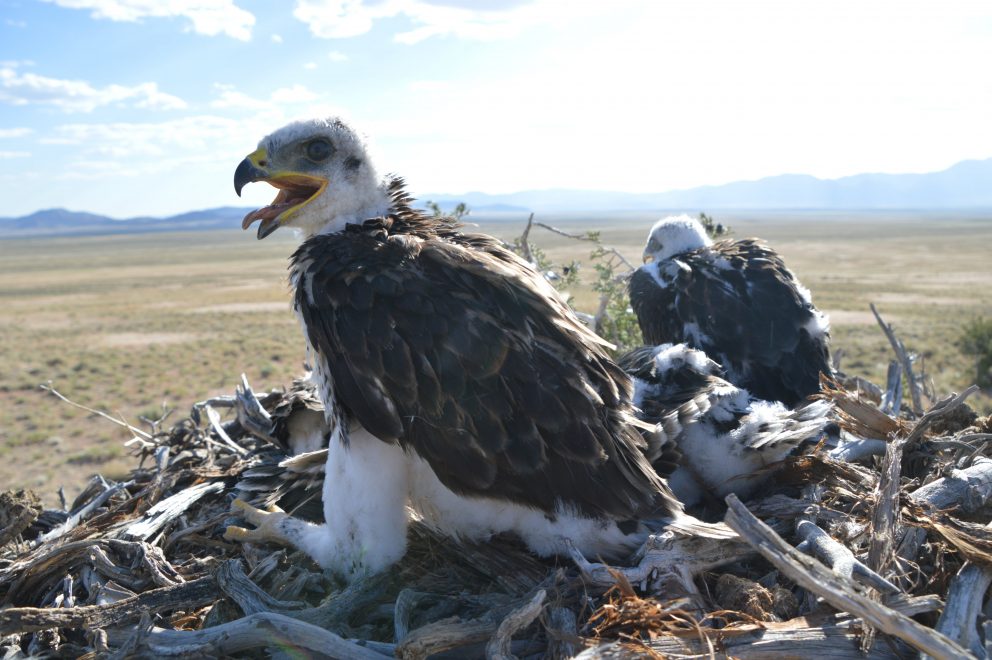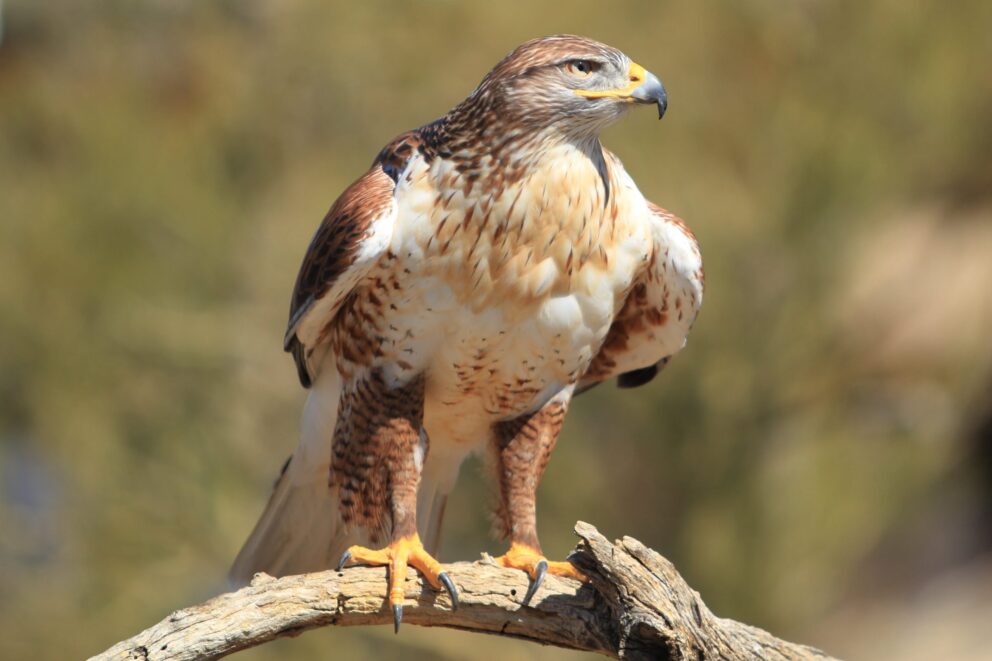- SCIENTIFIC NAME
- Buteo regalis
- CLASSIFICATION
- Bird
- LIFE SPAN
- 3-20 Years
- SIZE
- 22-27” | 2.2-4.6lbs
- STATE CONSERVATION STATUS
-
- Priority Species
- FEDERAL CONSERVATION STATUS
- Least Concern
- GAME STATUS
- Non-Game
- GAME TYPE
- None
- Washoe
- Humboldt
- Pershing
- Churchill
- Mineral
- Lyon
- Douglas
- Carson City
- Storey
- Elko
- Lander
- Eureka
- White Pine
- Esmeralda
- Nye
- Lincoln
- Clark
Habitat & Range
It would be possible to see a Ferruginous Hawk anywhere in Nevada, but they prefer open spaces in grasslands, sagebrush steppe, scrublands, and pinyon-juniper woodland edges. They most often breed in the densest brush and tree populations in eastern and central Nevada.
- Agricultural Lands
- Cold desert shrubland and sagebrush
- Grasslands
Threats
- Habitat Degradation
- Habitat Loss
- Invasive Species
Natural History
Ferruginous Hawks prey on a limited variety of small mammals including pocket gophers and ground squirrels; most often jackrabbits and cottontails. Occasionally, they will eat reptiles, birds, and amphibians. They hunt by standing on the ground and striking, or hopping and running at prey, diving from a nearby perch, searching on the wing, even hoving, or “kiting” in place in the air. Although somtimes nesting in a lone tree or cliffside, these birds usually nest on the ground, often in unsheltered gravel areas, rocky outcrops, haystacks, or in cities on flat gravel roofs. The eggs will be laid directly on the ground or in a nest the pair build together made of sticks, twigs, bark, and sagebrush. The female is able to incubate the eggs in low nests using her excellent camouflage.
Fun Facts














